|
   |
|
Page 4 |
Newsletter 122, Autumn 2018 © Hampshire Mills
Group |
North Wales Study Tour, May 2018 - Part II
Ruth Andrews
Pictures by Ruth Andrews

|
Cochwillan Watermill
This is where Saturday’s visit started. It is a
well-preserved large estate corn mill situated on a
loop of the Ogwen River. It retains good late 19th
century detail in its external character. Inside is
a virtually complete set of mill machinery,
including stones and a drying kiln.
The current mill was built as a fulling mill, which
was used to prepare cloth and operated as a home
industry. In the late 18th century it started using
diluted sulphuric acid as a detergent, which caused
damage to the salmon and sea trout fishing, so the
mill was closed and later bought by the Penrhyn
estate and converted into a corn mill.
|
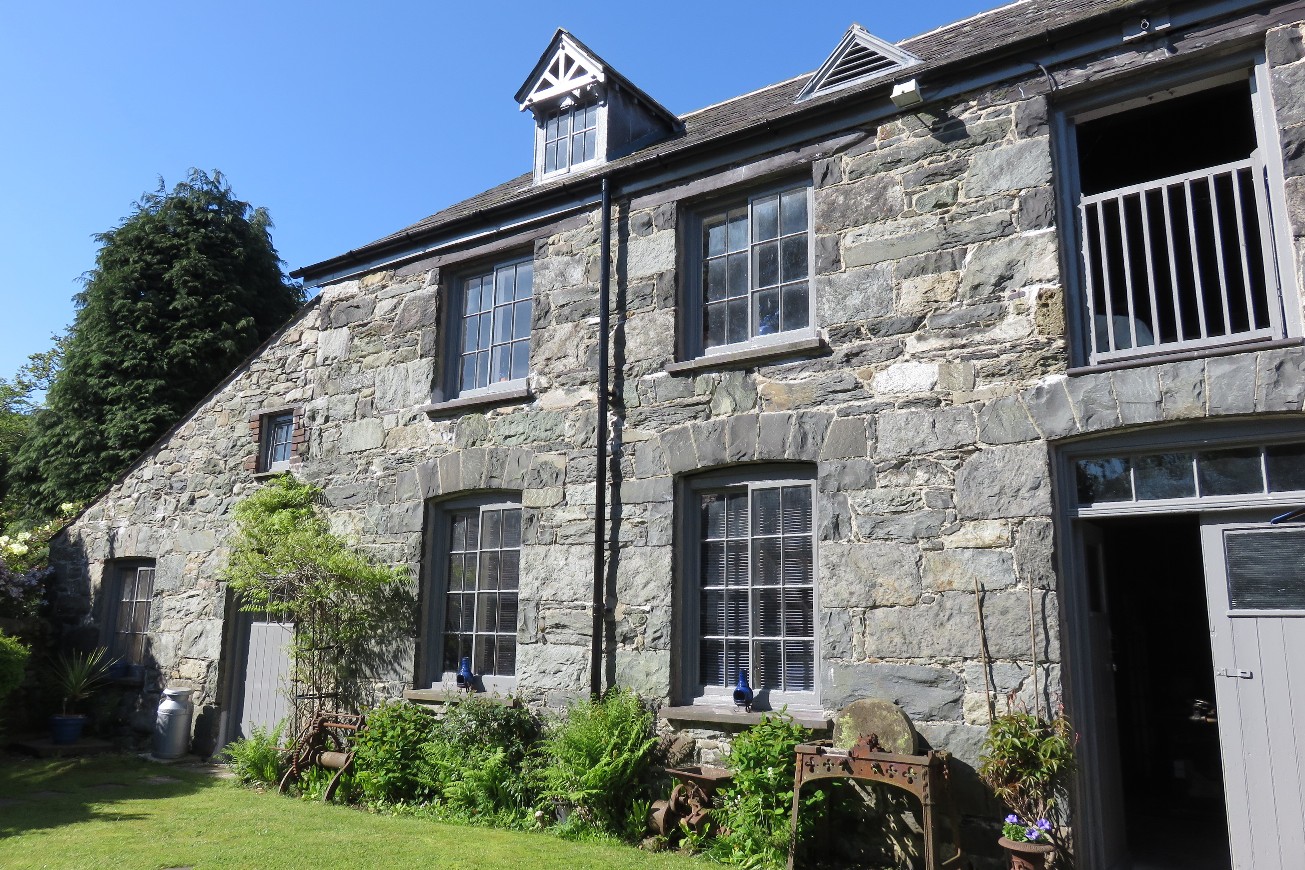
In 1901 it was taken over by a Mr John Hughes who
bought pulleys and shafting to assist in working its
4 sets of stones. It is now owned and occupied by
the Hutchinson family who showed us round and
provided a much appreciated morning coffee.
|
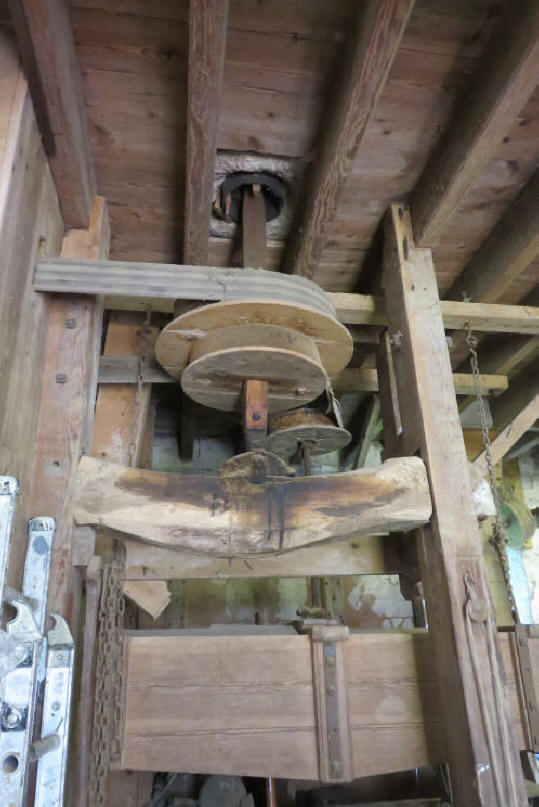
|
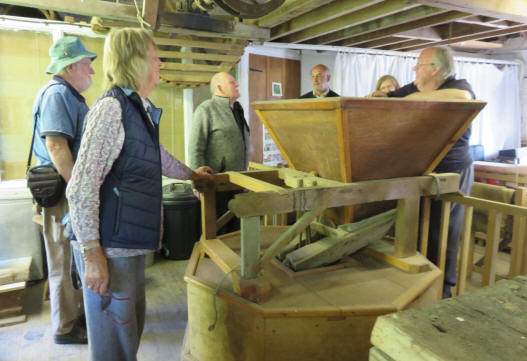

|
|
Electric Mountain
Next we proceeded to Llanberis to visit Dinorwic
Pumped Storage Hydroelectric Scheme (Electric
Mountain), housed in the abandoned underground parts
of Dinorwic slate quarry. We donned hard hats and
were transported underground by bus to see the six
300Mw GEC generators coupled to Francis-type
reversible turbines, which pump water back to the
top reservoir in times of low demand for
electricity. Photos were not permitted and wearing
hard hats to ride on a bus seemed a bit excessive!
The National Slate Museum
Back at the surface we explored the National Slate
Museum which is housed in the Victorian workshops
that once serviced and maintained the enormous
Dinorwic slate quarry above it. The workshops
catered for all the repair and maintenance work
demanded by a quarry, which once employed well over
3000 men, before it closed in 1969. |
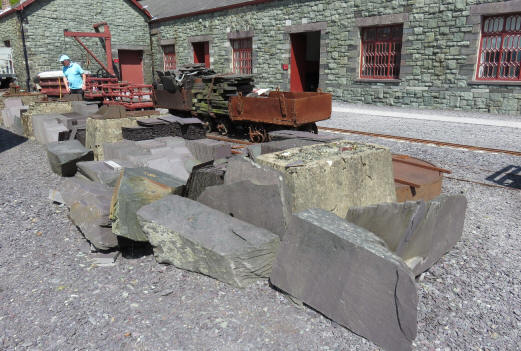 |
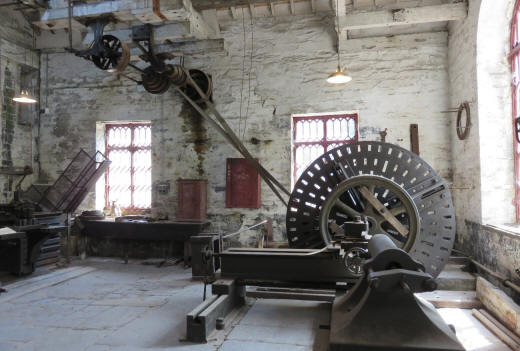 |
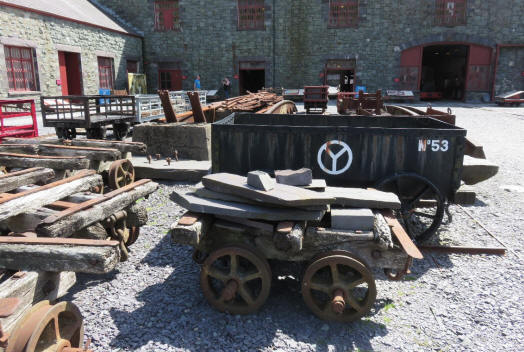
Its outstanding attraction is
the largest waterwheel in mainland Britain; it was
constructed in 1870 by De Winton of Caernarfon and
is 50ft 5in in diameter, 5ft 3in wide, and was built
around a 12in axle. Ashok’s photo with Alison
alongside the axle, gives a good indication of its
size. It still turns but probably freewheeling on
tap water, and the power for the rest of the
workshops is provided by a Pelton wheel, which took
over from the waterwheel early in the 20th century.
|
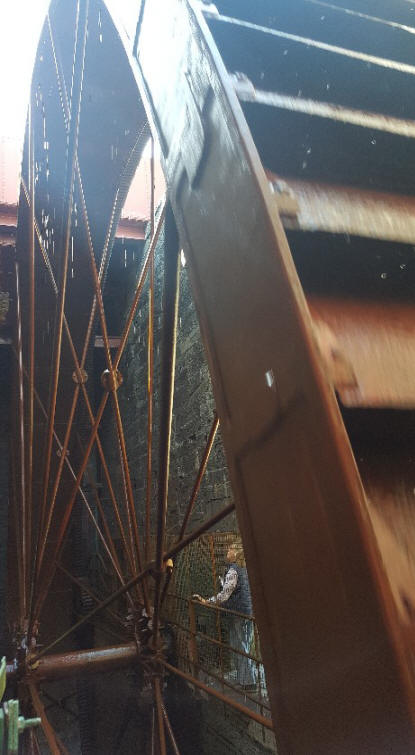
|
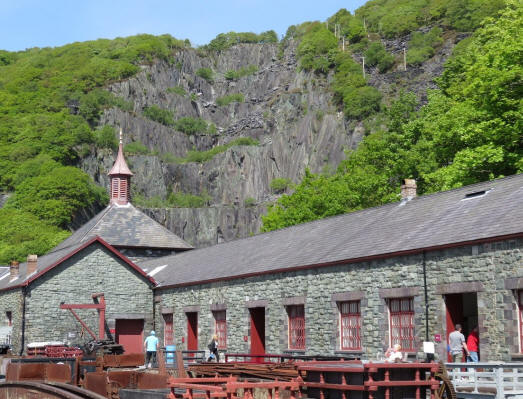 |
As well as providing yet more food for some of us,
the museum puts on a short introductory film To
Steal a Mountain, and a short slate-splitting
demonstration. The Victorian workshops are all open
to the public, including a new pattern store area,
housing the museum’s collection of over 2000 wooden
patterns used to build equipment for the quarry.
On a previous visit, several of us had explored
Vivian Quarry, seen in the photo (left, behind the
museum buildings), with its restored inclines and
barracks (workers hostels), but it was a very
serious uphill slog. More recently, Keith and I had
found a way up to the higher quarry levels which was
suitable for the minibus, where we could park near
the ‘Village tramway’ which was used to transport
the slate to the coast at Port Dinowic.
|
|
Dinorwic Quarries
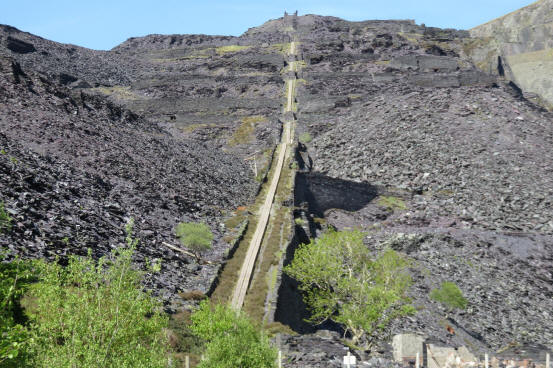
|
We were able to stroll along the tramway into the
heart of the historic working faces of the opencast
part of the quarry, and photograph two rope-wound
inclines. This one seems for to have been altered
since it was in use for slate haulage. At its foot
there is a derelict slate saw mill.
I was pleased to be able to photograph two ruined
winding drums (below) further along the quarry.
These used platforms attached to ropes to lower
loaded wagons to the tramway level, and were
presumably either self-acting or operated by water
balance, although the one on the right with its
clearly visible brake handle may have had a steam
engine.
|
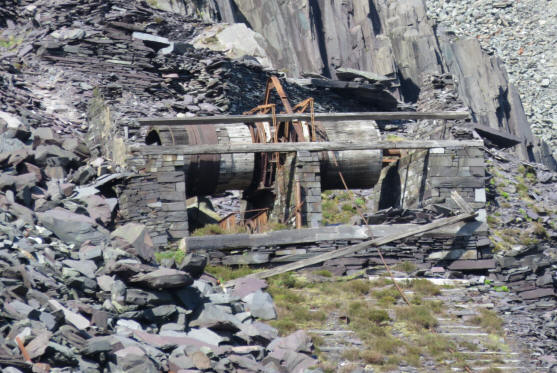 |
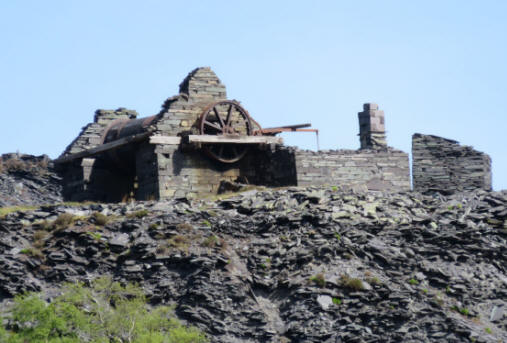 |
|
From this high vantage point there were glorious
views of Snowdon across the valley. Note the line
of the tramway on the left of the picture and part
of the extensive waste heaps down the side of the
mountain.
Our evening meal was at a small Italian restaurant
next to the ‘New Pier’ (1896!) in Bangor.
|
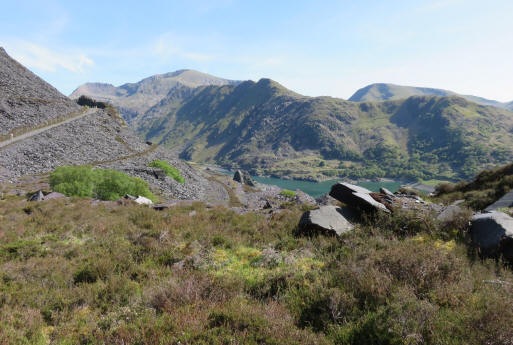 |
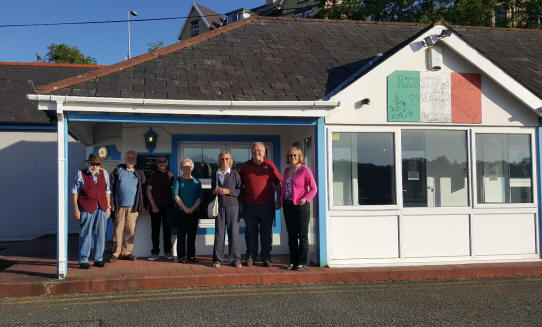 |
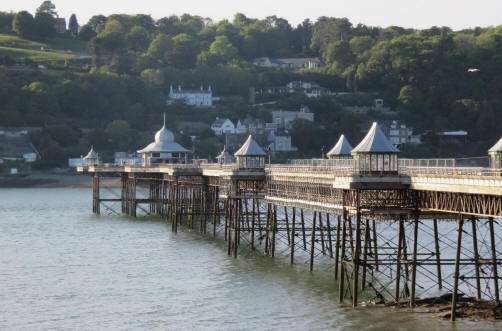 |
|
The Great Orme Tramway
On Sunday we were facing a long drive home, but we
started with a quick trip on the 1901 Great Orme
Tramway, before driving south towards Llanymynech
near Oswestry. The semi-wild cashmere goats are
clearly very used to posing for photographs. |
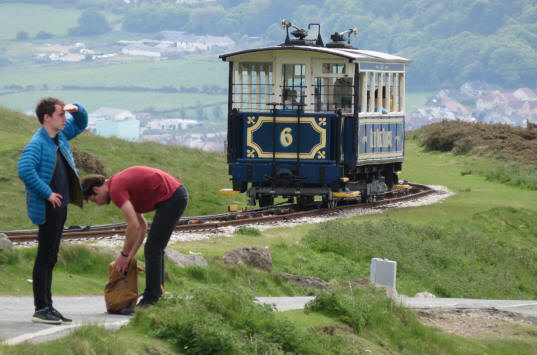 |
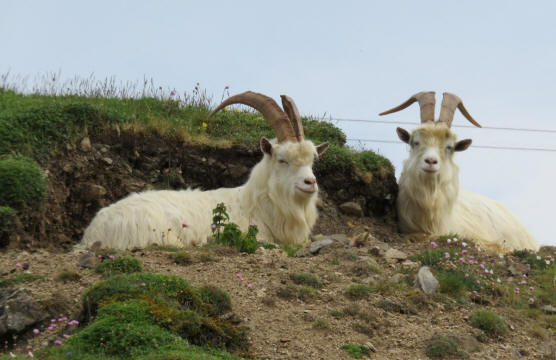 |
|
Llanymynech Lime Kilns
Llanymynech Heritage Area was set up in 2006–2009,
with funding from both the Heritage Lottery Fund and
English Heritage. Additional financial support also
came from the Aggregates Levy Sustainability Fund
and project partners, with the aim to conserve the
site for visitors and educational purposes. The
main feature is a well-preserved Hoffman kiln with
its original square section chimney. The kiln
closed in 1914 and was therefore only in production
for about 20 years. It is not entirely clear how it
operated, although it was intended to produce finer
quality lime for industry than the adjacent
traditional-style kiln. Hoffman kilns were more
common in the brick industry.
|
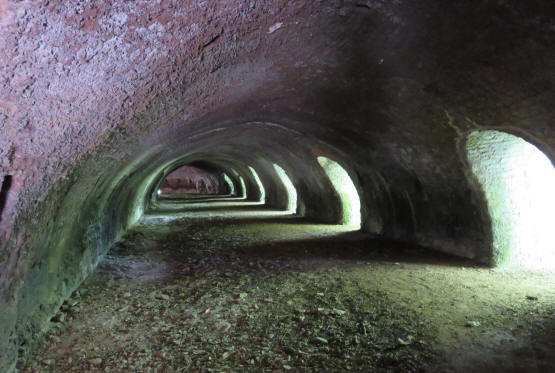 |
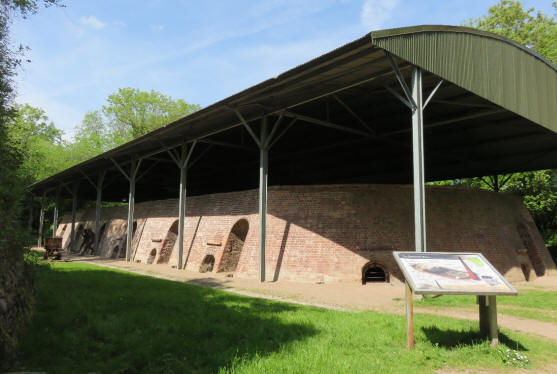 |
|
As part of the project to convert the area to a
heritage park, an archaeological investigation was
carried out. Its main aim was to gather information
about key features of the site, particularly the
location of former tramways, turntable track-beds,
and ground surfaces. We did not have time to fully
explore the site before reluctantly leaving Wales.
|
|
   |
|
|
